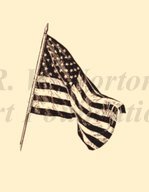
|

|
|
|
|
Willis was born at home in Hooks, Texas to George Taylor LaRue, a cotton farmer, and Annie Lee Evans LaRue. He was second youngest of ten children, including three siblings who died in early childhood. The family moved to Arkansas, where Willis started his education at Wallis Community School near Foreman. Growing up, he helped on the farm, and learned to plow with mules. He graduated from high school in Winthrop, Arkansas in April of 1943, then worked in Borger, Texas as a welder's helper for 75 cents an hour. Willis enlisted in the U.S. Army Air Forces as an aviation cadet, but a physical detected what later was diagnosed as a perforated eardrum. Inducted into the U.S. Army on August 9, 1943, he began serving at Camp Robinson, where he did so well on written tests he was eligible for cadet training after all. After he completed basic training at Buckley Field near Denver, Colorado, the air force, needing fewer pilots, allowed him to select radio training or mechanics school. He chose B-17 mechanics school at Amarillo, Texas. After its completion he went to aircraft instrument specialist school at Chanute Air Field in Rantoul, Illinois. Meanwhile, a brother serving in the air force died in the Pacific in a plane accident. "It almost killed my mother and dad," he recalls. At a replacement depot in San Antonio he was assigned to a B-29 unit--the 570th Engineering Squadron of the 359th Service Group at Tinker Field in Oklahoma City. In November of 1944 he sailed from Seattle, Washington on the Excelsior, a freighter converted to a troop transport. Thirty-seven days later he arrived at Tinian. There he lived in six-man tents and worked in Quonset buildings beside landing trips, where he maintained B-29s of the 313th Bombardment Wing. On July 4, 1945, he recalls, General Curtis LeMay arrived on an inspection trip. After Willis helped change out an instrument on his aircraft, LeMay passed out some of his famous cigars to him and the other mechanics. "I was just fool enough to give it to one of my buddies," recalls Willis, who did not smoke. Willis often worked 12- and 14-hour days, especially as air attacks on Japan escalated. "Everybody was willing to do it," he recalls. "There weren't too many slackers in my outfit and I don't think in any place else." He also recalls seeing at Tinian the two atomic bombs that the Enola Gay and Bocks Car, which took off from Tinian on its historic missions, dropped on Hiroshima and Nagasaki. After the war ended work slowed. "I just kind of maintained order and made them keep it clean," he remembers of his duties. After a 12-day voyage to Oakland, California, Willis was discharged at Fort Bliss near El Paso, Texas. He returned to Borger and in March of 1946 began working for Phillips Petroleum in inventory of a synthetic rubber plant. His long working career would include working for an oilfield supplier, operating a grocery store, running a vending machine route, and starting a cattle and hay operation. He worked for Southwestern Electric Power Company (SWEPCO) and eventually moved to Ida, Louisiana. He ran a grain elevator and served as foreman in a chemical warehouse and plant. He remained in the cattle business until 2006, and still runs his hay baling operation. Meanwhile, in July of 1952 he married Bobbie Hendricks, who passed away the following November. In March of 1954 he married Nona Ayers, who had one daughter. Together they would have three children. He married Juanita Estes on October 26, 1981. She has six children. |


